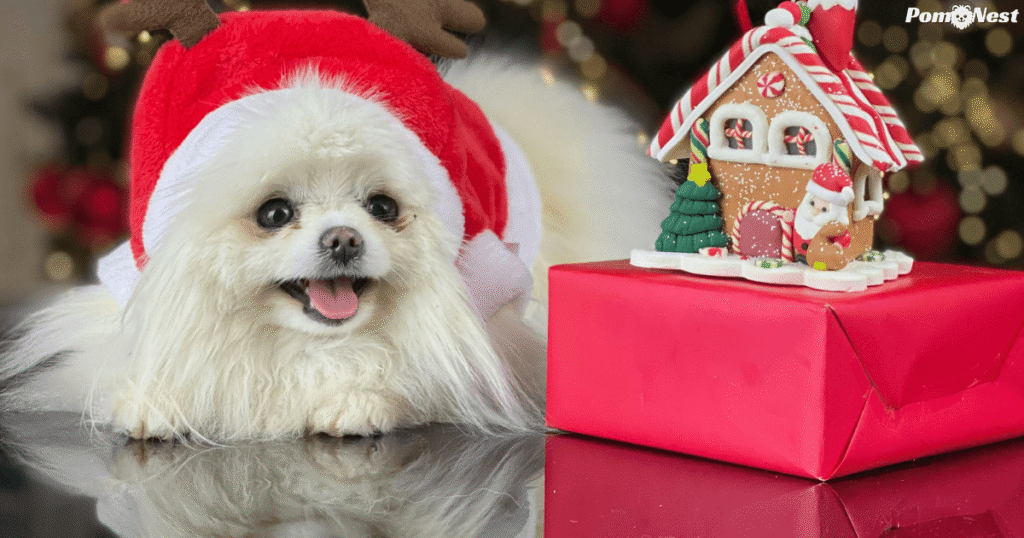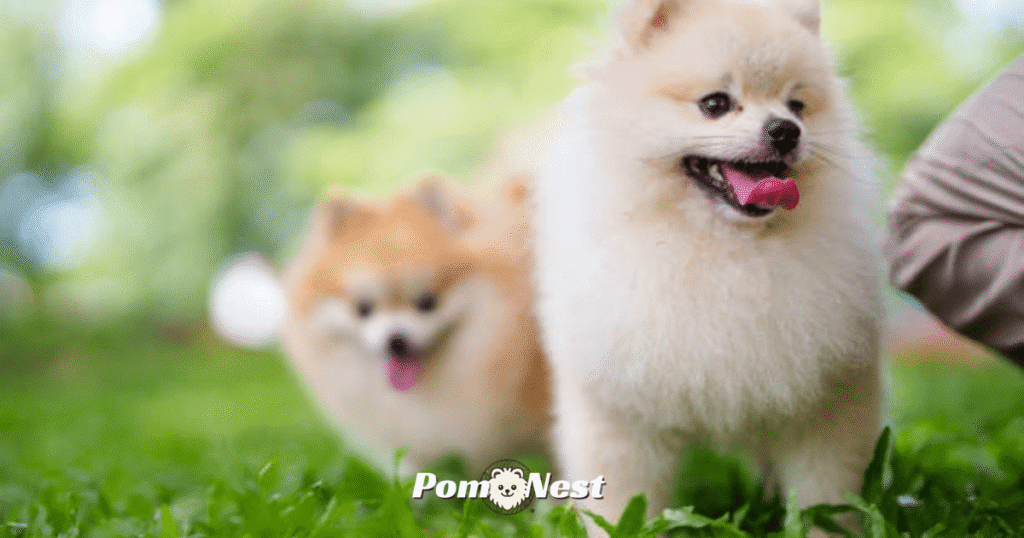The story of the Pomeranian starts with its ancestors—large, snowy-Spitz sled dogs bred to haul heavy sleds and guard supplies in the Arctic cold. When these dogs migrated to Pomerania, the area that’s now parts of Poland and Germany, breeders gradually made them smaller until they became lively, alert little dogs perfect for the home and the hearth. The breed really took off in the 1800s, when Queen Victoria fell in love with a pint-sized Pomeranian and began to show her little companion to everyone.
The royal endorsement set off a craze for dainty lap-sized dogs. From their icy sled-pulling roots to the warm royal hearth, Pomeranians shrank in size but kept their big, fearless personality. They even warmed the hearts of geniuses— icons like Mozart, Michelangelo, and Chopin had their own Poms. The American Kennel Club finally recognized the breed in 1900, and through careful breeding, the Pomeranian grew the spectacular fluff, vivid coat colors, and bright fox-like face that make them the vibrant pets we love.

The history of the Pomeranian dog is a story full of twists, warmth, and resilience. This little, cloud-like companion didn’t always curl up on plush beds or light up Instagram. Born as a hardworking Arctic helper, the Pomeranian gradually switched jobs and neighborhoods until it settled in the plush castles of Europe. From frigid shores to crowded drawing rooms and then upscale dog shows in America, the breed’s path is anything but ordinary.
At first glance, most people picture a Pomeranian as a dainty lapdog. Yet under that luxurious coat is the fierce dedication of the ancient Spitz. To appreciate the Pom’s star status today, we have to look back at the rugged winters, the royal adoration, and the journey that whisked it from icy tundras to tiara-adorned ballrooms.
The Hidden Past of the Pomeranian Dog Breed
The Pomeranian didn’t start as a pocket-sized pup. Its forebears were big, energetic, and hard-working, built for serious tasks. Long before royal carpets were rolled out, these dogs pulled sleds over icy northern trails. They trace their roots back to the Arctic and belong to a wider clan known as the Spitz breeds. With their double, fluffy coats, pricked ears, and muscular legs, they were built for stamina and warmth. This rugged package is the heart of the Arctic working-dog legacy.
As they journeyed with humans from one chilly continent to another, the dogs eventually reached Pomerania, the area hugging today’s Poland and Germany. It’s from here they took their name. The Pomeranian Coast was a hive of trade and travel, and the dogs quickly became valued watch-keepers. They barked fiercely at any shadow that dared to pass and kept a close eye on cargo and crowds. That signature courage still shines in today’s Pomeranian. Even the nickname “Pom” nods to their tide-lapped home—“Pommern” roughly means “by the sea.” This quaint stretch of shore really charted the Pomeranian’s future.
Arctic Sled Dogs and Their Tiny Descendants

Long before they cuddled on sofas, these dogs had real sledding jobs. They pulled supplies and herded reindeer, battling snow blizzards every day. Their heavy fur and quick wits fit the frozen tundra perfectly. Sprinkle in some tiny ancestor bloodlines, and you get a modern Pomeranian with the same pluck packed into a pocket-sized bundle.
How Pomerania Shaped the Breed’s Name and Role
In Pomerania, the dogs debuted a fresh name and a fresh gig. The sledges vanished and the still-spirited dogs began to patrol castles and courtyards. Their yappy bark earned instant fame, barking warnings much louder than their size suggested. Inside the grand homes of lords and ladies, they became the barked alarm on four furry feet.
Royal Downsizing: From Large to Little in a Few Generations
Today’s Pomeranian curls in purse-sized glory, but the grand ancestors stood 30 to 40 pounds. The trim journey, however, didn’t happen randomly. It was a royal fashion statement; courts favored tiny, easy-to-carry pups. What began as a practical size became a royal demand, forever changing the Pomeranian’s shape and style.
This was the grand kickoff of toy breed evolution. Ancestors of the Pomeranian shrank because breeders sought little dogs you could easily tote around that were brimming with character, so they chose the tiniest puppies from each new litter. Over time, what started from bigger, fur-covered Spitz ancestors steadily morphed into the mini Pomeranian that now hangs out stylishly in tote bags.
Why Early Pomeranians Tipped the Scale At 30 Pounds More
In the 1700s and 1800s, Pomeranians were hefty. They strutted around with wide fronts and tipped the scales at nearly 50 pounds! Heck, the fluffy Poms in aristocratic paintings by Gainsborough looked more like mini wolves. Queen Charlotte’s favorites could have joined you for a safari instead of snuggling in a bed.
Calibrated Breeding and the Rise of the Cuddle Dog
Change didn’t happen on a whim. It was a mosaic of generations. Once Queen Victoria strolled in with a 12-pound Pom, thrust into the limelight, the little guy was all the rage. Pocket-sized dogs became the rage, and breeders answered the call. That little crossover moment built the underpinnings for the warm and snuggly vibe Poms are best known for now.
When Royalty Fell in Love with the Pomeranian
The breed went from cute to celebrity status when Queen Victoria brought Marco home. He was no ordinary pet—he set off a full-blown craze. Over 35 Pomeranians joined her court, each adding to the sparkle. Wherever the Queen went, a Pom was tucked under her arm, and pretty soon the rest of the world wanted a royal fluff of their own. Folks adored their brave little hearts and clouds of fur, and the Pomeranian quickly soared to the top of the royal dog list.
Before Victoria, highborn ladies and lads already admired the tiny furballs. Poems praised their spunk, and oils showed them lounging on velvet cushions. Still, it was the Queen’s sparkle that turned a polite whisper into a world-wide howl.
Queen Victoria’s Influence on the Breed’s Fame
Because she adored the Pomeranian, she became the breed’s poster queen. Her 7.5-pound white darling, Gena, was practically a living crown jewel. The Queen never roamed the palace without a fluff or two, and London’s streets soon buzzed with copycats and admirers. As Gena’s fellow Poms got smaller, anyone who wanted to seem fashionable had to breed even itty-bittier models. Victoria set the tiny standard, and Europe’s best breeders snapped to it.
Famous Historical Figures Who Owned Pomeranians
Besides Queen Victoria, other stars also dot the breed’s glittering dramatis personae. Mozart composed playful tunes for his darling Pomeranian, Pimperl, while the city was alive with music. Michelangelo had one that reclined on velvet, softly snoozing, while he captured the divine on fresh plaster. Frederic Chopin was once charmed into composing “Waltz of the Little Dogs” by the sight of a Pom spinning its tail like a glittering windmill. These tiny companions often held the title of favorite muse, inspiring everything from symphonies to masterpieces.
The Pomeranian’s Debut on the Global Stage
The Pomeranian didn’t linger on one continent. Sailors carried it across the North Atlantic, and soon it zig-zagged into the United States, charming audiences wherever it went. The very first American dog shows included the Pom as a brand-new class. The deck was already stacked with charisma. Then, in 1900, the American Kennel Club was charmed enough to officially acknowledge the Pom’s playful history. Dog shows multiplied, and breeders rolled up their sleeves to tidy its coat, sharpen its attitude, and turn Pom fluff into a spectacular trademark. American Poms blossomed their own twist, strutting a coat even fuller and an attitude even bolder than their European kin.
From England to America – The Breed Takes Off
The breed first landed on American shores in the late 1800s, neatly wrapped in shoes of imported elegance and European flair. Its New York City debut took place at a dog show, of course, where the little marvels bobbed into the Miscellaneous Class—too cute yet too new for a proper title. By 1900, their meteoric rise forced the judges to carve out a whole new line in the schedule. Within heartbeats, American dog lovers had crowned the breed for its feisty temperament, pillowy coats, and daring, “I own the room” attitude
AKC Recognition and Westminster Wins
AKC welcomed the Pomeranian into its ranks back in 1900. Just nine years later, the American Pomeranian Club was born, launching its first dog show in 1911. That event drew 262 of these tiny competitors. Pomeranians didn’t just shine in the ring back then; they also became frequent stars at Westminster, collecting Best of Breed ribbons year after year and showing the world just how charming they could be.
The Evolution of the Pomeranian Breed Standard
Pomeranians of the early 1900s had a rougher look. Their coat wasn’t as plush, their ears were oversized, and their faces were more rounded. Breeders gradually sought a softer, floatier coat, a more compact frame, and a sharper profile. This work has given today’s Pomeranians the distinctive, almost fox-like face we recognize. The American Pomeranian Club and AKC played key roles, publishing guidelines that steered breeders nationwide. Their shared vision turned a collection of local styles into a refined, cohesive Pomeranian standard..
Major Changes in Appearance Over the Decades
In the 1920s, typical Pomeranians tipped the scales at 12 to 18 pounds. Today, the show ring favors little dynamos that weigh under 7 pounds. Their coats are supersized, their muzzles more finely sculpted, and their tails arch more boldly over the back. Each shift was intentional, a result of breeders selecting for these magical proportions decade after decade.
Colors That Pop, Sizes That Wow
Pomeranians strut in a rainbow of colors nowadays. The classics are fiery orange, soft cream, jet black, and warm sable. But if you dig into the breed’s past, you’ll find early Poms were often white or sported a fancy black-and-white, like the famous Fino. Super rare hues like blue and chocolate are out there, yet you’ll rarely spot them in the show ring
Age-Old Traits That Still Star in the Pomeranian Playbook

Size and shape have evolved, but the Pom’s heart—bold, peppy, and unshakeably feisty—remained the same. That tiny warrior inherited a spirit meant for icy northern lands. It still raises alarms at the rustle of a leaf, and its allegiance stretches from puppyhood into old age.
What combines that fiery spirit with twinkling eyes and a fluff bomb that never goes out of style? A loyal personality that loves being tiny yet proud of its past. It’s the conscience of the breed, translating ancient Arctic grit into today’s cozy homes.
Ever-Vigilant, Ever-Loyal, and Fluff That Steals the Show
Even curled up on the couch, the Pom exudes alert authority. It’s the mini sentinel, peering out for mischief. A yip here, a bounce there, and a big heart ready for action. That’s the Pomeranian spirit we welcome into our lives, whether we’re brave enough to admit we put tiny capes on them or not.
Fun Pomeranian History Facts You Probably Didn’t Know
The story of the Pomeranian dog is packed with wild surprises. Take the iceberg story—the Titanic. Two pooches made it to safety. One went with Margaret Hayes, sneaked out of the first-class lounge hidden in her tote. Another was saved by a family that jumped from lifeboat to lifeboat, the Pom tucked under the life jacket.
Famous human friends also colored the tale. Artists, musicians, and even kings would call a Pom “my little muse.” They were partners in great scenes, not just fuzzy sidekicks.
Royal Scandals, Shipwrecks, and Heroic Poms
In one royal palace, a tiny Pom yapped and yapped—turns out it was warning the queen that a burglar was too close. Her jewelry stash was saved. Another little champ stayed beside a soldier on the battlefield, refusing to sleep anywhere but the mud next to the front line. Whether on the throne, on a doomed ship, or lying still while artists crafted a diamond collar of light, the Pom has watched history in awesome silence.
The Pomeranian in Pop Culture and Modern Media
Zoom to the screens and feeds of today. Poms still steal the spotlight. They’re the tongue-out stars of dog movies and snack run TV ads. Boo and JiffPom, the Insta Pom pals, racked up a combined billion-wagging viewers. Celestial A-listers stroll a red carpet and toss a Pom like a sparkly purse. This lively circle may stretch back centuries, but the Pom still shows off like it got its first Instagram filter yesterday.
In a world buzzing with emojis and spinning carousels, Pomeranians still make sad days sparkle. Their fluff may catch a filter, but that sparkle? Still 100% real. Old pictures and TikToks flash by, yet the Pom keeps winking back.
Is the Modern Pomeranian Still a Royal Dog?
Every Pomeranian still lives like a mini monarch. Their closets overflow with tiny tuxedos, fair-trade kibble, and donut beds. Groomers throw in massages you and I would love, and carts roll coolest Poms down Main Street. Still, beneath that cotton-candy coat, a heart full of courage and sass keeps beating. Their royal genome hits “resume,” not “pause,” on every selfie.
Why Today’s Owners Still Treat Poms Like Nobility
You scroll every day and think it’s hilarious, but it’s also true: Pomeranian fandom never left. Birthdays become full-on fairy-tale events, pupcakes get lit, and every wag turns into a meme. This love story peeked already in royal halls, and now it swipes through story feeds.
Final Thoughts: What the History of the Pomeranian Teaches Us
Pomeranians teach a pretty remarkable lesson: tiny fluff can carry giant stories. From wolf ancestors holding campfires as company, through castle draughts, and now into cozy laps, their throne keeps shifting but shimmering. A small furball with a loud bark, already a pro at castle-couch world tours.
If you’re lucky enough to have a Pomeranian in your home, remember this: you’re living alongside a tiny, furry slice of history. These little dogs were cherished by royals in centuries past, and they’re still making history every single day.
👉 Want to read more about Pomeranians? Go to Pomclub
FAQs
What is special about Pomeranian?
Pomeranians are known for their bold personality, fox-like appearance, and rich royal lineage, making them tiny dogs with a big legacy.
What is the history of the Pomeranian?
The Pomeranian dog began as a large Arctic sled dog from the Spitz-type dog breeds and was later miniaturized in Pomerania (region in Poland and Germany) before becoming a royal favorite in England.
Which queen had Pomeranians?
Queen Victoria adored Pomeranians and famously owned over 35, helping to popularize the smaller version of the breed worldwide.
Are Pomeranians German or Polish?
Pomeranians trace their name and early breeding to Pomerania (region in Poland and Germany), making them a shared heritage between the two.
Is a Pomeranian intelligent?
Yes, Pomeranians are highly intelligent and curious, often excelling in obedience and agility thanks to their alert and clever nature.
